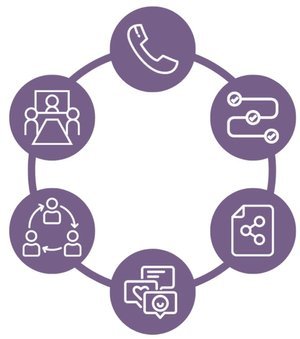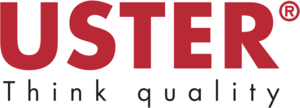Screen sharing killed the audio call - at the latest since the pandemic. Meetings are being held by video conference. The telephone number is almost obsolete. About the advantages of integrated telephony in Microsoft Teams with CoffeeNet 365.
TELEPHONY AS AN INTEGRAL PART OF COLLABORATION
Today, even sophisticated telephony requirements can be implemented directly in Microsoft Teams and with our modern workplace solution CoffeeNet 365. Companies no longer think of telephony as a separate special topic - with separate systems and providers - but as one of several reliable communication formats for a modern way of working.
Technical capabilities allow us to think of telephony as an integratited part of collaboration. It no longer has to be locked into a technical silo. The different systems are getting closer and closer together, and that's a good thing:
Telephony systems
Contact center solutions
Video conferencing systems in meeting rooms
Collaboration software
Intranet software
Fileshare systems
Workflow software
Employees want simple solutions - everything together, without context switching. A platform that puts everything they need, and more importantly, at their fingertips.
A SELF-EXPLANATORY, DIGITALLY INTEGRATED WORKPLACE
Microsoft Teams has brought us closer to that goal. The pandemic massively increased the pressure for change and adoption of digital working.
We have fully integrated Microsoft Teams into our Modern Workplace solution so that employees and organizations - small and large - can tap into its potential. With Microsoft Teams as an integrating interface, the various communication formats can be selected on a use-case basis - independently of time, location and device.
Chat for informal communication - as a group or bilaterally
Calling and video conferencing with screen sharing for collaboration in real time - also integrated in the physical meeting rooms.
Intranet functionalities for presenting information and sharing knowledge
Document management for storing and collaborating on documents
Bundling of all communication channels in a central platform (contact center)
Telephony is one of several reliable communication modes for a modern way of working.
We are convinced that an overall concept for all these communication formats - voice, video, screen sharing, connection to a secure file storage - brings many advantages. So that everything fits together in a secure, structured and self-explanatory for way the employee. We are constantly advancing our CoffeeNet 365 modern workplace solution with this goal in mind.
We have already implemented telefony integration for several customers. And often, this very step became the driver for a modern and increasingly digital way of working.
On the one hand, we bring the technical expertise for the individual applications. On the other hand, our experience and knowledge in dealing with the employees - with the business, contributes to a successful adoption.
As we all know, providing digital capabilities does not make the organization more digital. I don't dial the phone anymore, I share - but only if I also understand the benefit behind it and can translate it into added value.











































